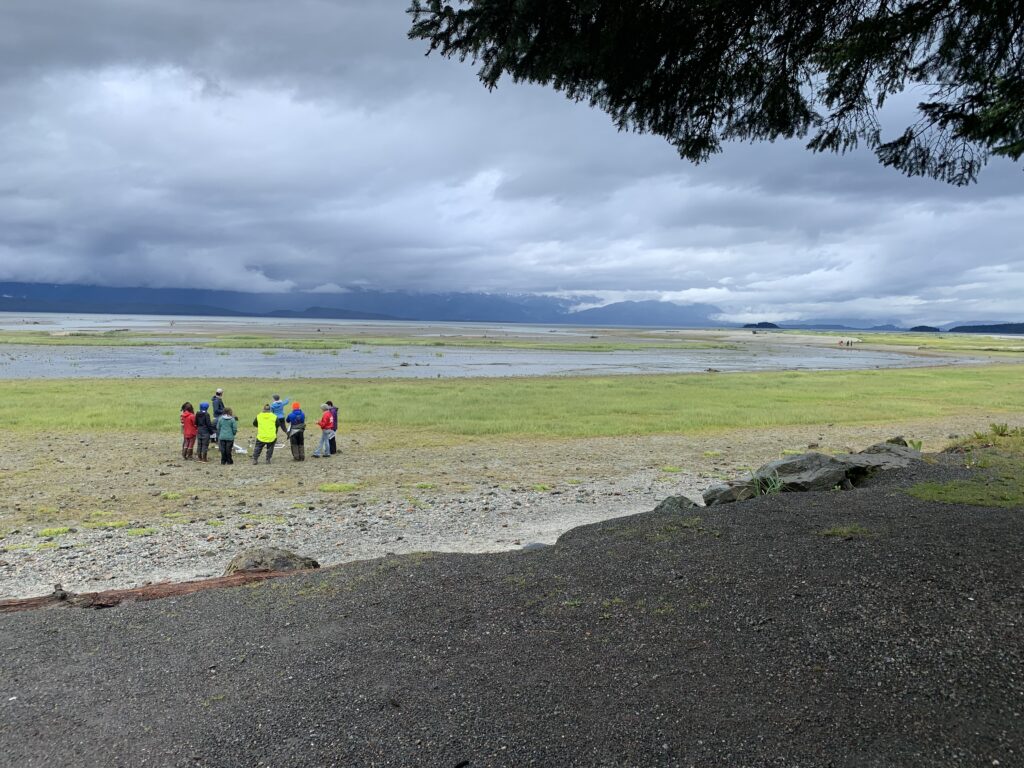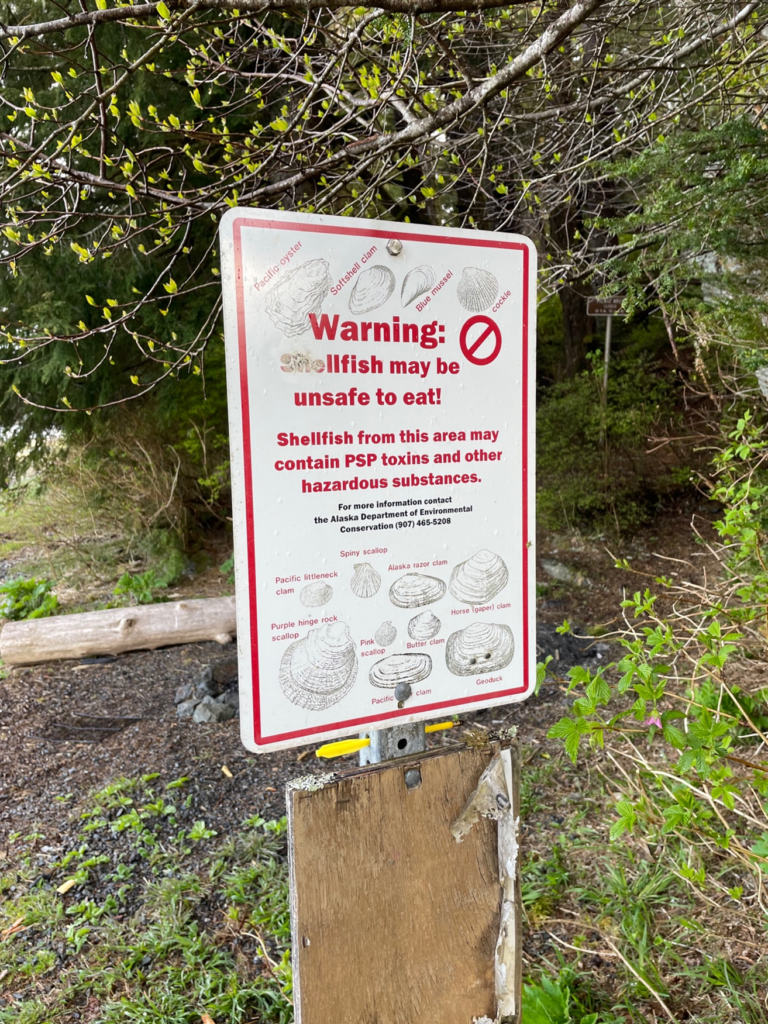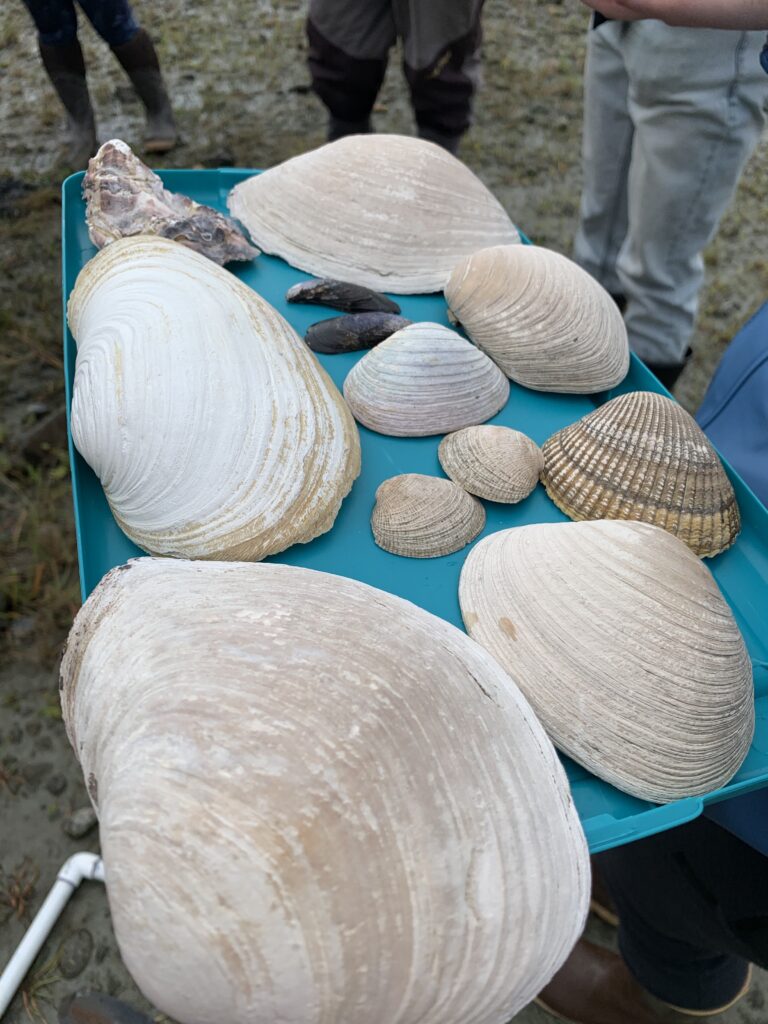
A group of Alaska Native tribes has run their own shellfish toxin testing program since 2016 because the state only tests commercial shellfish. The program has seen success, but funds and staffing constrain their scope, as a new GeoHealth study reports. Credit: H. Roland
A group of coastal Alaska Native tribes in 2016 began monitoring shellfish, a traditional harvest, for deadly biotoxins because the state only tests commercial harvests. The program fills an essential gap in public health protection and has found success, with 17 tribes now in the testing network. Securing stable, long-term funding and improving public outreach could improve outcomes even further, a new study reports.
Toxins from some types of algae blooms can accumulate in shellfish and, when consumed, cause paralytic shellfish poisoning (PSP). Even small quantities of the toxin can lead to death. Alaska tests commercially sold shellfish, and the state's Division of Environmental Health advises against eating shellfish harvested from beaches that have not been recently tested.
But because local community shellfish harvests are not for commercial sale, the shellfish can't be tested with the state. Coastal indigenous communities are at high risk of poisoning because many depend on traditional wild-harvested shellfish. Between 1993 and 2021, Alaska Natives suffered 53% of recorded PSP cases despite only making up 16% of Alaska's population.
In 2014, Alaska Native tribes founded the Southeast Alaska Tribal Ocean Research network (SEATOR), with early testing beginning in 2016. SEATOR's tribal partners regularly collect shellfish samples, encourage community members to collect and send in their own shellfish for testing, and share toxin data with communities to inform harvesting decisions. Seventeen tribal communities are now involved, increasing participation and risk awareness.
Even with this success, funding and community perceptions around risks limit how widespread and effective the toxin testing program can be, the study reports.
"Shellfish harvesting is central to coastal Alaska Native culture," said Hugh Roland, an environmental sociologist at the University of Alabama at Birmingham who led the study. "Filling this gap between commercial shellfish testing and community needs is critical, especially for rural communities that rely more heavily on shellfish. And to do that, we really need to understand how the testing network has been effective, as well as what has constrained testing efforts and capacities. Then we can address those barriers, and communities can continue their traditions safely."
The study was published in GeoHealth, which publishes research investigating the intersection of human and planetary health for a sustainable future.
In testing we trust?

Liaisons for communities participating in the shellfish toxin testing program decide how to best communicate risks to their communities. Methods range from posting signs to visiting families and reporting updates personally. Credit: H. Roland
To understand the barriers to the program's reach and effectiveness across Alaska and how it is perceived by communities, Roland and his collaborators interviewed 27 SEATOR staff who help manage testing, and they also interviewed other individuals with shellfish toxin expertise. They discussed several broad themes: community perceptions of toxin testing and the risks of shellfish harvesting; the status of toxin testing in those communities; and barriers to or facilitators of the actual toxin testing process.
Overall, the researchers found that communities with active toxin testing were very aware of shellfish poisoning, but reactions varied widely. Some people were less concerned, relying on personal experience with the safety of the traditional shellfish harvest. Others took the risk of PSP so seriously that they stopped harvesting shellfish altogether.
"It's about bringing both sides to the middle," said Jacob Kohlhoff, the environmental education coordinator for the Sitka Tribe. "We want to show that harvesting is good. We don't want to stop it. But we have to do it safely."
But successful risk communication relies on consistent, timely testing, which can be a problem. The program struggled with delays particularly during the height of the COVID-19 pandemic, with the testing facility closed between October 2021 and February 2023 and delays in testing until July 2023.
That halt in testing just a few years into the program damaged trust with communities, interviewees said. People don't want to keep shellfish in the freezer indefinitely while they're waiting for test results, especially if they're relying on it for food during lean winter months.
"Full-scale testing had just begun in late 2018 and was relatively new, so trust eroded pretty quickly," Kohlhoff said. It has been difficult to get people to buy back into the program when it seems like testing could stop again at any time, he said.
Climate change is further complicating risk communication, Roland said. As coastal waters warm and their nutrient fluxes change, harmful algae blooms - the source of shellfish toxins - are becoming more frequent and widespread, and they are occurring over a longer season. Historically, winter was a safe time to harvest, but "things are changing," one participant said. "We find paralytic shellfish toxins in our shellfish pretty much year-round at this point."
Room for improvement
The researchers found major barriers related to the communities' remoteness, which makes it more difficult to work and attract workers, and low and unreliable funding from grants.

Risk awareness around shellfish toxins helps improve public health, but some people have ceased harvesting altogether, the study reports. Credit: H. Roland
The first issue is geographic: Many Southeast Alaska Native communities are deeply isolated and difficult to get to. There, the cost of living is high, and housing is limited and expensive. Those factors make carrying out sampling difficult, and it can be a tough sell for would-be staff members.
The second hurdle is financial. The toxin testing is funded by a series of grants, each supporting novel work and each lasting only a few years. However, more rural communities with fewer resources are less able to apply for these grants. The need to apply for new funding every few years also contributes to high staff turnover. SEATOR enables communities to better pool resources and apply for grants together, but applying still takes staff time and resources.
Despite these barriers, the toxin testing program has enabled small or remote tribes to take the safety of traditional harvests into their own hands when the state falls short. The network's success could serve as a model for other community-led environmental health efforts elsewhere, Roland said.
#
Notes for journalists:
This study was published in GeoHealth, an open-access AGU journal. Neither the study nor this press release is under embargo. View and download a pdf of the study here.
Interview requests should be directed to the researchers and their press offices.
Paper title:
"Perceived challenges to tribally led shellfish toxin testing in Southeast Alaska: Findings from key informant interviews"
Authors:
- Hugh B. Roland (corresponding author), Department of Epidemiology, University of Alabama at Birmingham, Birmingham, AL, USA
- Jacob Kohlhoff, Kari Lanphier, Christopher Whitehead, Sitka Tribe of Alaska, Sitka, AK, USA
- Sneha Hoysala, Rollins School of Public Health, Emory University, Atlanta, GA, USA
- Esther G. Kennedy, Bodega Marine Laboratory and department of Earth and Planetary Sciences, University of California Davis, Davis, CA, USA
- John Harley, Alaska Coastal Rainforest Center, University of Alaska Southeast, Juneau, AK, USA
- Matthew O. Gribble, Department of Medicine, Division of Occupational, Environmental, and Climate Medicine, University of California San Francisco, San Francisco, CA, USA






